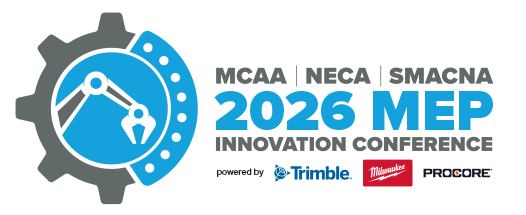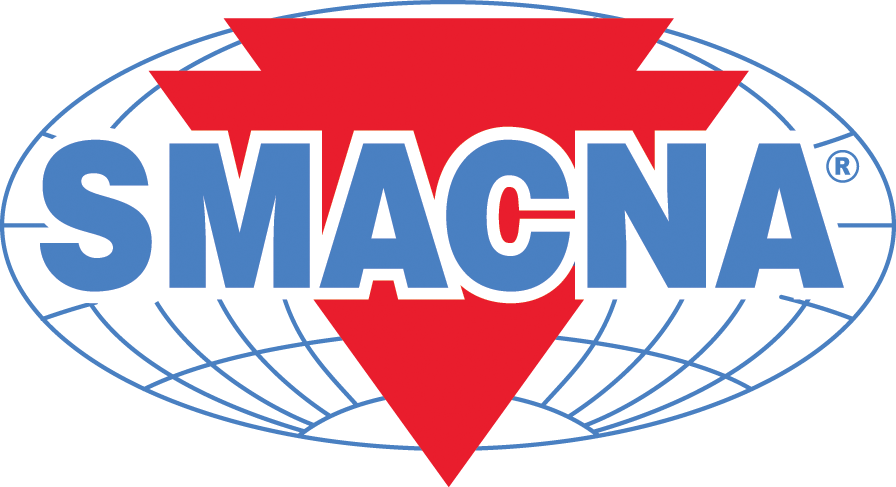MEP Look Back: Seize the Data
As you prepare to attend the 2026 MEP Innovation Conference, learn more about practical tools to collect, clean and leverage the data generated by your shop.
 At the 2025 MEP Innovation Conference, Joe Melody from Helm Mechanical and Trent Leinenbach from Stratus led the session “Seize the Data,” showing how contractors are turning fabrication information into real business intelligence. The discussion focused on practical ways to collect, clean, and use shop data to drive performance and guide investment decisions—without disrupting daily work.
At the 2025 MEP Innovation Conference, Joe Melody from Helm Mechanical and Trent Leinenbach from Stratus led the session “Seize the Data,” showing how contractors are turning fabrication information into real business intelligence. The discussion focused on practical ways to collect, clean, and use shop data to drive performance and guide investment decisions—without disrupting daily work.
These lessons will carry forward to the 2026 MEP Innovation Conference in Austin, where sessions will continue to explore how contractors are evolving into data-driven organizations.
1. Start with a simple scoreboard.
The most effective data programs begin small. Identify a few key metrics that actually matter—like weld inches per hour or joints per hour—and display them where the team can see them. A visible “scoreboard” in the shop helps crews understand how they’re performing in real time. The point isn’t complexity; it’s clarity. A simple, consistent way to show results builds buy-in and makes data part of the daily routine.
2. Measure magnitude over time.
At its core, good performance tracking comes down to how much work gets done and how long it takes. Every KPI should reflect that relationship—welds per hour, pounds per shift, or assemblies per day. This “magnitude over time” approach makes it easy to compare productivity across materials, shifts, or even fabrication facilities. For mechanical contractors, it turns data into a universal language for performance.
3. Collect data through normal work.
The best systems don’t ask people to do extra work to record information. Instead, they pull data from the tools and processes already in use—timestamps from machines, fabrication statuses, or information already logged in the ERP. When data collection happens automatically, it stays accurate and doesn’t slow down production. Workers focus on their tasks while the system quietly builds the dataset needed for analysis.
4. Normalize bad data—don’t avoid it.
No shop will ever have perfect data. Some entries will be missed or left open, but that’s not a reason to abandon tracking. Modern tools like Power BI and Microsoft Copilot can filter out bad entries, remove non-working hours, and normalize the results. The goal is consistency, not perfection. Contractors who learn to clean and interpret imperfect data gain a realistic view of performance without overburdening their teams.
5. Use data to guide investment and improvement.
Once reliable dashboards are in place, the information can do much more than track output. It can show whether a new welder, machine, or process actually improved productivity. Comparing data before and after major purchases turns gut feelings into measurable ROI. For contractors, this is where data pays off—helping justify capital investments, refine estimating, and guide future business decisions.
Looking ahead, MEP 2026 (January 26–28 in Austin, TX) will build on this momentum. We’ll bring together contractors from across the country to share strategies, showcase new tools, and talk openly about both the challenges and solutions shaping our industry.
MCAA members can watch Joe and Trent’s full clip from MEP 2025 here: Seize the Data – Measure, Improve, Repeat
Registration is now open. Don’t miss your chance to be part of the conversation: mepconference.com.
Oct 21, 2025 — Member Update
Latest Articles
Dec 3, 2025 - SMACNA's Secretary-Treasurer sits down with Seth Lennon to discuss the value of SMACNA membership and why constant engagement at events, such as the annual convention, is critical, especially for educational opportunities.
Dec 3, 2025 - SMACNA's new Vice President joins Seth Lennon to talk about his rise through the industry, some of the issue areas that he is particularly passionate about, and what he hopes to accomplish on the executive committee.
Dec 3, 2025 - December 10 is the last day to register for the program meant to help you with the knowledge and skills needed to negotiate effectively.

